
Wisconsin Fast Plants® of the Department of Plant Pathology at UW-Madison are helping scientists explore how plants can thrive beyond Earth, and they’re paving the way for future space farming and sustainable life support systems in space. In fact, if you follow on Instagram #fastplantsinspace (@fastplants) we’ll be sharing about Fast Plants in flight on Blue Origin with Emily Calandrelli (@thespacegal)! We’ve been collaborating on research and education outreach with Major Luci White, Space Force astrobotanist and educator at the US Air Force Academy (@astro_luci) and Emily Calandrelli, The Space Gal—you can even potentially get some of the Fast Plants seeds she is sharing from her flight! Also, Fast Plants are slated to be grown on the moon in a separate NASA project called LEAF!
Why all this fun research with Fast Plants in space? As we move closer to extended space missions and potentially colonizing the Moon and Mars, it’s crucial to understand how plants can grow in space. Since 1995, Wisconsin Fast Plants have been a model organism used in space studies, revealing insights into plant growth under extreme conditions. With their rapid life cycle—flowering in just 14 days and completing their life cycle in 40—Fast Plants make it possible to quickly study plants’ responses to space environments.
In this post, we’ll look at the role of Wisconsin Fast Plants (scientific name Rapid-cycling Brassica rapa) in space research, highlight important discoveries, and explore how teachers and students are contributing to the future of space botany.
Why Are Fast Plants in Space Important for Space Exploration?
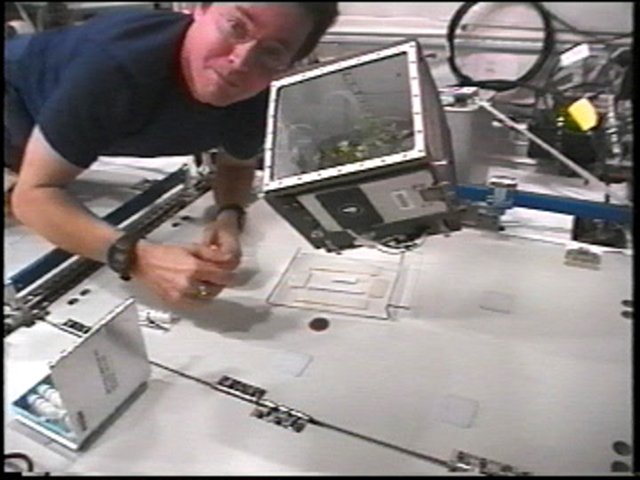
To create a sustainable life in space, scientists need plants to produce food, generate oxygen, and recycle water. But the challenges of space, like microgravity and radiation, make it difficult for plants to thrive. Wisconsin Fast Plants provide an ideal model for studying plant adaptation in space.
Fast Plants–through projects out of the College of Agricultural and Life Sciences at UW-Madison–have been sent on various space missions. These missions include research on the Space Shuttle Mir and the International Space Station, helping researchers understand how plants respond to microgravity, radiation, and limited resources. Their short life cycle allows scientists to observe an entire life cycle in just over a month, which is ideal for space missions where time and resources are limited.
Key Discoveries with Wisconsin Fast Plants in Space
Through experiments with Wisconsin Fast Plants, scientists have gained critical insights into how plants can grow in space. Here are some major discoveries:
1. Effects of Microgravity: One of the most important discoveries has been how microgravity affects plant growth. Without gravity, Fast Plants grow according to their initial orientation and adapt with “random walk” root movements, guided more by light and oxygen gradients than gravity. These observations help scientists understand how to grow plants when gravity isn’t present.

2. Reproductive Development in Space: For plants to support long-term space missions, they must complete their life cycle—from seed germination to seed production. Fast Plants and other species in the Brassica family, like Arabidopsis thaliana, have managed to complete this cycle in space. However, challenges like delayed growth and partial sterility still arise. Scientists learned through experimentation that plants need well-ventilated chambers for proper seed development in space.
3. Seed Storage and Viability: On long journeys, maintaining seed viability is crucial. Experiments show that seeds stored in space can stay viable over time, and in some cases, perform better than seeds stored on Earth. For instance, seeds stored on the Long Duration Exposure Facility (LDEF) for six years demonstrated remarkable resilience, suggesting that seeds can survive the journey to distant destinations like Mars. (Click here to learn more about Fast Plants seed harvesting and storage on Earth).
4. Nutritional Quality and Seed Performance: Space-grown seeds may have altered nutritional qualities, such as reduced weight or changed storage reserves, which could affect future generations and their value as a food source. Understanding these changes is essential to ensure space-grown plants can meet astronauts’ nutritional needs and space-grown seeds have the vigor necessary to grow future generations of plants.
5. Educational Impact: The Wisconsin Fast Plants program offers hands-on learning opportunities, allowing students and teachers to take part in space research. Projects from the past like the Collaborative Ukrainian Experiment (CUE) and Teachers and Students Investigating Plants in Space (TSIPS) connected classrooms to real-world science. Similarly, present-day projects that link Fast Plants in space with classrooms help inspire the next generation of agriculturalists, scientists, and engineers.
Wisconsin Fast Plants in Current Space Missions
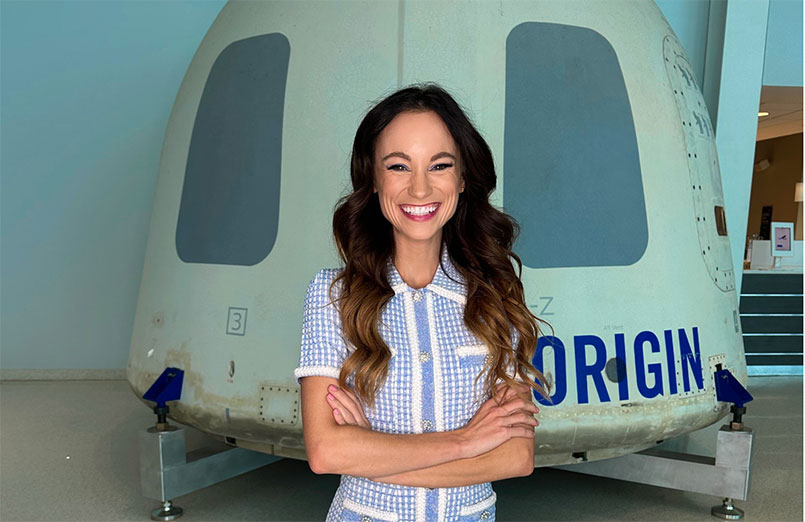
In November 2024, science communicator, author, and engineer Emily Calandrelli will conduct her first Fast Plants in space experiment as an astronaut aboard a Blue Origin mission. Be sure to follow #fastplantsinspace with Emily, @thespacegal to learn how your students may participate, too!
In addition, our Fast Plants Program Director from the Department of Plant Pathology, Dan Lauffer, recently collaborated with and grew research plants for Major Luci White, an Astrobotanist with Space Force. Major White conducted microgravity research, using Fast Plants that she and her cadets flew on the KC-135 Stratotanker (aka the Vomit Comet!). Tissue from those plants was then sent to other collaborating researchers to look for molecular changes potentially caused by the microgravity experience.
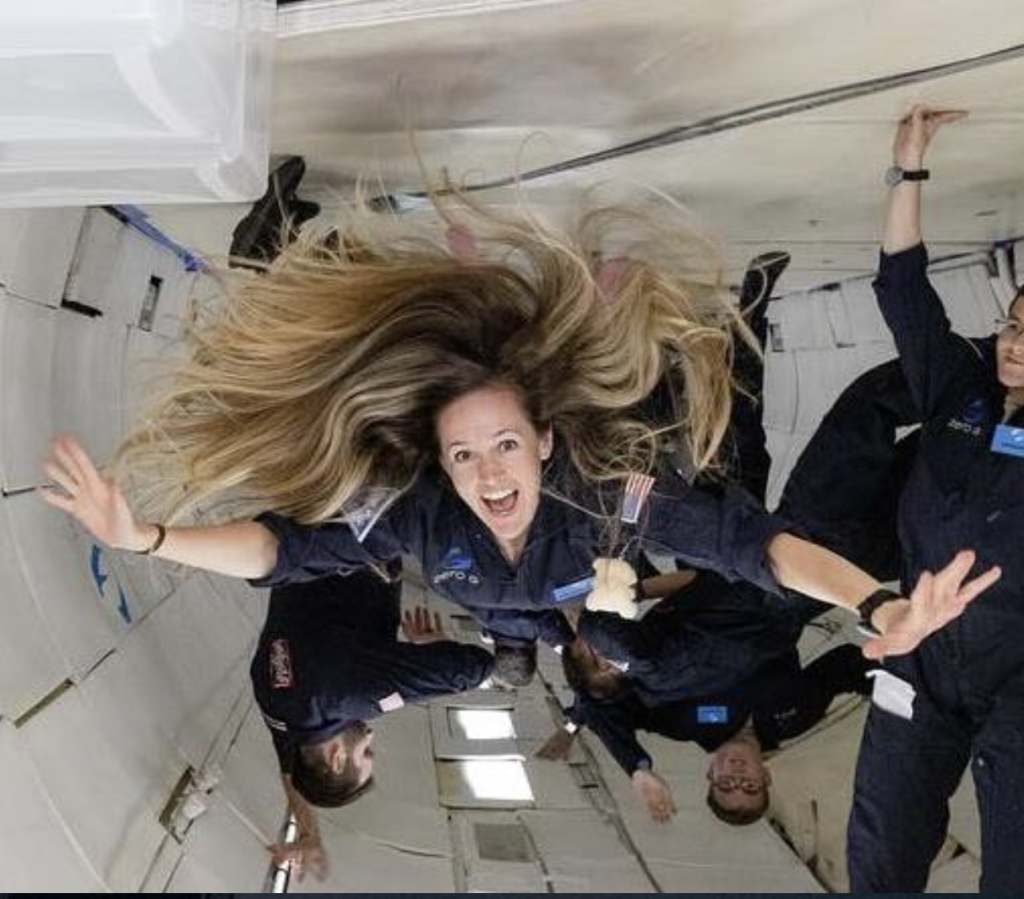
Major Luci White in microgravity during a summer 2024 flight on the KC-135 Stratotanker (affectionately nick-named the “Vomit Comet”). Major White is also a UW-Madison alum!

Building on this initial research, Emily Calandrelli, Dan Lauffer, and Major Luci White are conducting research with Fast Plants seedlings flown on Blue Origin. Together, research in microgravity helps to grow our understanding of plant biology in space.
Stay tuned for more information about how to follow their research project as it is implemented!
The Future of Space Agriculture with Wisconsin Fast Plants
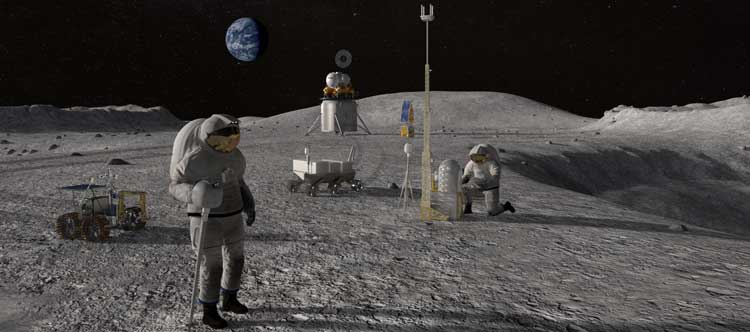
Image Credit: NASA
Looking to the future, Wisconsin Fast Plants are set to be part of NASA’s Artemis III mission to the Moon in 2026. This mission will include the LEAF β (Lunar Effects on Agricultural Flora Beta) payload, which contains a growth chamber designed to protect plants from intense sunlight, radiation, and extreme temperature changes. Alongside Fast Plants, the chamber will house duckweed and Arabidopsis thaliana. LEAF’s specialized growth chamber will also allow scientists to monitor plants’ responses to lunar conditions, adding new layers to our understanding of plant resilience in space.
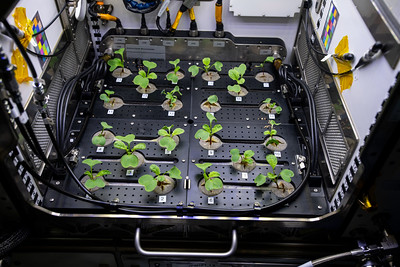
Ongoing research with Fast Plants promises exciting developments in space agriculture. Here are some promising directions:
1. Model Species for Space Agriculture: Fast Plants’ quick growth makes them ideal for short missions and offers a model for breeding other plants for space. The upcoming lunar experiments with LEAF β will provide vital data on plant responses to the Moon’s challenging environment.
2. Sustainability and Life Support Systems: Long missions will require systems that recycle air, water, and food. By studying plants growth in space, scientists can work toward closed-loop life support systems where plants provide both food and oxygen. Fast Plants experiments offer valuable insights for designing these sustainable systems.
3. Education and Outreach: The Fast Plants program gives students hands-on research experiences, encouraging them to explore science and technology. With projects like those led by Emily Calandrelli, students worldwide can engage with space research, sparking curiosity and laying the foundation for future scientific discoveries.
How Teachers Can Get Involved with Fast Plants in Space
Teachers can bring space agriculture to their classrooms with resources from the Wisconsin Fast Plants Program and its collaborators, including NASA. Students can conduct experiments simulating microgravity conditions, use data from past space missions, and share their ideas and photos on social media using the hashtag #fastplantsinspace and the handles @fastplants and @thespacegal. These projects can help make science more engaging for many students by connecting their learning to space research.
Also, if you’re attending the spring 2025 NSTA conference in Philadelphia, visit the Wisconsin Fast Plants booth. We’ll be in the exhibit hall, featuring Fast Plants in Space in our demonstrations.

Growing Knowledge, One Fast Plant at a Time
Wisconsin Fast Plants show us that life can adapt to even the most challenging environments. By studying these plants in space, scientists are advancing our understanding of how to support human life beyond Earth. For teachers, the Fast Plants program offers an inspiring way to engage students with space botany and the potential for space farming.
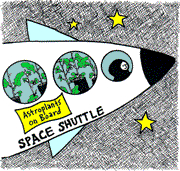
The journey of Wisconsin Fast Plants—from classroom projects to space experiments—demonstrates the amazing potential of these tiny plants. As Fast Plants continue to help us explore plant growth in space, they bring us one step closer to a future where humans not only visit other worlds but may one day live there.
Next time your students grow Wisconsin Fast Plants, remind them: they’re part of an experiment that’s reaching beyond Earth, helping to answer big questions about life in space.
Partial List of References
Colla, G., Battistelli, A., Proietti, S. et al. Rocket seedling production on the international space station: Growth and nutritional properties. Microgravity Sci. Technol 19, 118–121 (2007). https://doi.org/10.1007/BF02919465
Dreschel, Thomas W., et al. “Paper Session II-D-The Collaborative Ukrainian Experiment:(CUE): Opportunities for Collaboration in Science Education and Research.” (1997). https://commons.erau.edu/cgi/viewcontent.cgi?article=1608&context=space-congress-proceedings
Kuang, Anxiu, et al. “Pollination and embryo development in Brassica rapa L. in microgravity.” International journal of plant sciences 161.2 (2000): 203-211.
Musgrave, M. E. (2000). “Realizing the potential of rapid-cycling Brassica as a model system for use in plant biology research”. Journal of Plant Growth Regulation. 19 (3): 314–325. doi:10.1007/s003440000036.
Musgrave, Mary E. “Seeds in space.” Seed Science Research 12.1 (2002): 1-17.
Musgrave, Mary E., et al. “Gravity independence of seed-to-seed cycling in Brassica rapa.” Planta 210 (2000): 400-406.
Niles, Douglas, and Lauffer, Hedi B. Serendipity and the Space Farmer (2016). https://resources.fastplants.org/resources/serendipity_and_spacefarmer.pdf
“Plants in Space: Wisconsin Seeds First To Sprout From Stock Grown on Mir” (1997). news.wisc.edu. Retrieved 2022-07-12.
Williams, Paul H. “Teachers and Students Investigating Plants in Space. A Teacher’s Guide with Activities for Life Sciences. Grades 6-12.” (1997).

